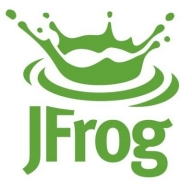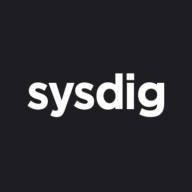

Sysdig Secure and JFrog Xray are two prominent security tools in the cybersecurity category. Sysdig Secure seems to have the upper hand in support and pricing, while JFrog Xray is favored for its comprehensive features.
Features:Sysdig Secure is recognized for robust threat detection, compliance capabilities, and real-time container activity visibility. JFrog Xray is praised for extensive artifact scanning, deep CI/CD pipeline integration, and a broader feature set. While Sysdig Secure offers strong security mechanisms, JFrog Xray's integration capabilities give it an edge.
Room for Improvement:Sysdig Secure users suggest enhancements in scalability, integrations, and performance efficiency. JFrog Xray users note the need for improved user experience, policy management, and documentation. Sysdig Secure's weaknesses focus on technical aspects, whereas JFrog Xray requires better usability improvements.
Ease of Deployment and Customer Service:Sysdig Secure has a straightforward deployment process and responsive customer service, rated highly by users. JFrog Xray is also easy to deploy but receives mixed feedback on support responsiveness. Sysdig Secure's superior customer service offers a distinct advantage.
Pricing and ROI:Sysdig Secure is appreciated for competitive pricing and perceived value, delivering solid ROI. JFrog Xray, though more expensive, justifies its cost with extensive features and integration benefits. Sysdig Secure provides better immediate ROI based on cost, but JFrog Xray's higher initial investment is considered worthwhile for its advanced feature set.
| Product | Market Share (%) |
|---|---|
| Sysdig Secure | 2.7% |
| JFrog Xray | 4.0% |
| Other | 93.3% |


| Company Size | Count |
|---|---|
| Small Business | 1 |
| Midsize Enterprise | 3 |
| Large Enterprise | 6 |
| Company Size | Count |
|---|---|
| Small Business | 5 |
| Midsize Enterprise | 2 |
| Large Enterprise | 3 |
JFrog is on a mission to enable continuous updates through Liquid Software, empowering developers to code high-quality applications that securely flow to end-users with zero downtime. The world’s top brands such as Amazon, Facebook, Google, Netflix, Uber, VMware, and Spotify are among the 4500 companies that already depend on JFrog to manage binaries for their mission-critical applications. JFrog is a privately-held, global company, and is a proud sponsor of the Cloud Native Computing Foundation [CNCF].
If you are a team player and you care and you play to WIN, we have just the job you're looking for.
As we say at JFrog: "Once You Leap Forward You Won't Go Back!"
In the cloud, every second counts. Attacks move at warp speed, and security teams must protect the business without slowing it down. Sysdig stops cloud attacks in real time, instantly detecting changes in risk with runtime insights, a unique AI architecture, and open source Falco. Sysdig delivers live visibility by correlating signals across cloud workloads, identities, and services to uncover hidden attack paths. By knowing what is running, teams can prioritize the vulnerabilities, misconfigurations, permissions, and threats that matter most. From prevention to defense, Sysdig helps enterprises move faster and focus on what matters: innovation.
Sysdig. Secure Every Second.
We monitor all Container Security reviews to prevent fraudulent reviews and keep review quality high. We do not post reviews by company employees or direct competitors. We validate each review for authenticity via cross-reference with LinkedIn, and personal follow-up with the reviewer when necessary.